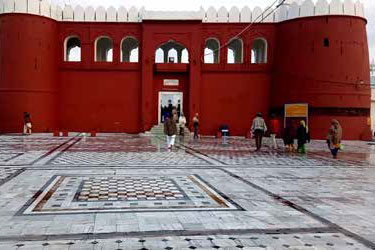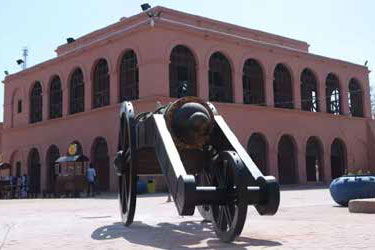When we talk of heritage and culture, we include therein a large number of things which play an important role in the life of a community, a country or even the world on the whole. That is why each and every community wants to save its heritage and culture. Each country has got a department for saving its heritage and culture and on the world level UNO is making efforts to preserve the heritage and culture of all the countries. When we elaborates these terms, we refer to buildings, art and architecture, coins and stamps, music, language and literature and even the way of living of the people covering their eatables, clothes and celebrations of social and religious occasions. Our forefathers, who had developed the heritage and culture of respective communities or countries, could not pay much attention for its preservations. This task was left to the following generations, but, even those people neglected this important aspect. It was only after the middle of the 20th century that some scholars and concerned experts started taking interest and the institutions were created for preserving the same. Here, we are confined to Sikh heritage and culture, which broadly includes the entire Punjabi heritage and culture. In the present century, the importance of heritage and culture has increased and as such the Sikhs have also started paying attention to the same. When in 2003, Richard Mass had brought out a publication about a trail of Anglo-Sikh heritage in London, the Sikhs came to know about our valuable collections of the period of Maharaja Ranjit Singh, which were present in Albert Museum in London. Further, when Smithsonian Institute of Washington, USA organised an exhibition and published a book in regard to that, the Sikhs were more enlightened. Then came the two books by a Singapore Sikh scholar, S. Amardeep Singh, whereby he informed that our rich heritage in Pakistan was being lost.
Sikh Buildings – Forts, Palaces etc.
Starting with Sikh buildings, though, Sri Harmandir Sahib has no parallel, our heritage buildings include apart from Gurdwaras, various forts, havelis, bungas and such other buildings like Khalsa College, Amritsar which make us proud. Sri Guru Gobind Singh Ji began the construction of five defence forts all around the town, Anandpur Sahib with a view to protect the Sikhs from the Hill Rajas and Mughals. These five forts were Keshgarh at the centre (now a Takht), Anandgarh (fort of bliss), Lohgarh (fort of steel), Holgarh (fort of colour) and Fatehgarh (fort of victory). All the forts were joined together with earthworks and underground tunnels. Presently, existing forts are in the form of Gurdwaras. For example, Gurdwara Qila Anandgarh Sahib, located on the foot hills of Himalaya with beautiful surroundings, is one of the most beautiful Gurdwaras. Naina Devi temple too is visible from here. After the period of Gurus, some forts were built by the Sikh Generals including Maharaja Ranjeet Singh. Most of these forts are presently in a bad shape, as the same have not been taken care of as valuable heritage. Bobby Singh Bansal, a British Sikh visited Pakistan to explore the lost heritage of Sikhs. He had been travelling from Jamrud to Shabqadar documenting forts, historical sites and exploring Sikh heritage of Khyber – Pakhtunkhwa (formerly known as North West Frontier Province). He believes that Khyber – Pakhtunkhwa Sikh Heritage Sites have the potential to increase the tourism many times more. He further holds that 90% of Sikh heritage sites are located in Pakistan, particularly, of the period of Maharaja Ranjeet Singh who ruled over the entire religion between Hazara to Afghanistan. S. Hari Singh Naluwa was the controller of these areas. There were 78 Kacha forts built in the area including Michni Bara, Shabqadar, Jamrud and Kishan Bhar. One of the forts in Haripur District was named after Hari Singh Nalwa as it was built by him in 1822. The Government in Pakistan’s Khyber Pakhtunkhwa provice has now decided to convert this fort into a museum. On the banks of river Kabul, near the Pir Sabak Village, lies the tomb of Samadhi of Bhai Phoola Singh – an Akali Sikh Leader who died in the battle of Nowshera in 1823.
Next to the tomb is a building commemorating the Akali leaders – both are in ruins. Bansal said Sikhs had also built forts in Akora Khattak, Jehangira and Khairabad in Nowshera. “Sardar Lehna Singh Sandhiwalia built the fort in Akora Khattak and while the main structure is there, it has been partially destroyed,” he said, “The Bannu Fort is also an important site in the province. It used to be called Duleep Ghar Fort after the last Sikh ruler of Punjab and Ranjeet Singh’s youngest son, Maharaja Duleep Singh.” He added that during the British Raj it used to be called Edwardes Fort. While talking about the Sikh community in K-P, Bansal said that they probably decided to stay back because of a language barrier. He added that unlike the Punjabi-speaking Sikhs who settled across the border, the Pashto-speaking Sikhs would have found it difficult.

